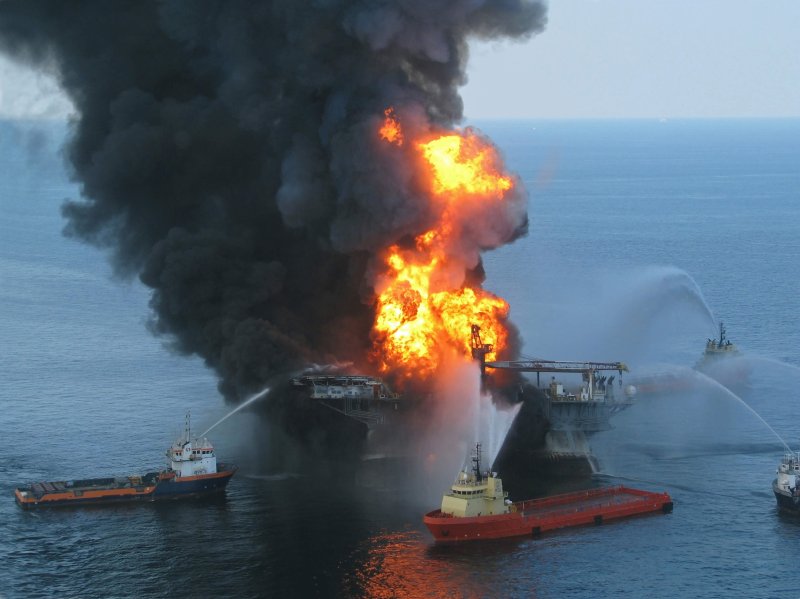For eight weeks, more than 200 million gallons of crude leaked onto the sea floor after British Petroleum’s Deepwater Horizon oil rig exploded on April 20, 2010. The disaster, which killed 11 men on board, was the worst oil spill in history. But given the amount of oil that spilled, it should have been much, much worse.
In fact, much of the oil from the spill was never recovered by the clean up efforts. Instead, it had been digested by bacteria and other microorganisms around the site. Scientists have now sequenced the genetics of those species of microbes and found that these organisms worked together to chew up oil molecules—each playing a different role in taking oil from a caustic environmental killer to inert byproducts. The study also found some microbes that digested the chemical dispersants sprayed into the ocean during clean up, which can be destructive to the environment themselves.
The Deepwater Horizon oil spill was five to twenty times larger than the Exxon Valdez oil spill in Alaska in 1989. But the environmental impact was not. That’s largely because not all of the 200 millions gallons of crude made its way onto beaches and into the marine ecosystems. For months scientists wondered what happened that made the difference. Jazz Shaw writes at Hot Air:
Puzzled environmentalists have returned to one intriguing question over and over again in the years since the spill: what happened to all the oil? Scientists have been scratching their heads trying to make the math work out for quite a while now because there was a lot more oil leaked out of the drill site than ever showed up on the beaches or was recovered from surface slicks. Sure, some of it was trapped in deeper ocean layers under thermal barriers, but much of it still seemed to be “missing” from the final calculation.
In a study published this month in Nature Microbiology, a team of geneticists identified the species of bacteria around the spill that metabolized hundreds of millions of gallons of oil and the shared metabolic pathway they used to get the job done. Not surprisingly, different species digested different parts of the oil molecules. They also digested their fellow microbe’s byproducts creating an intricate metabolic pathway. It was the entire microbial community, not just one or two microorganisms says Genetic Engineering News:
These scientists sequenced the DNA of microbes that, far from being harmed by the Deepwater Horizon oil spill, thrived and multiplied, mainly because they reacted to the oil as if it were a hydrocarbon buffet. Some microbes chowed down on alkanes, whereas others munched on aromatic hydrocarbons, the way some diners at an all-you-can eat affair would descend on meat dishes or skip straight to dessert.
How did these species all manage to be at the location of the spill in the first place? Woods Hole Oceanographic Institution researchers point out that there is a chronic level of oil contamination in the gulf because of the large oil and gas industry in the region. These microbes likely evolved the ability to use small leaks as a food source. The species then thrived and grew explosively when so much food became available after the BP spill and subsequent leak.
A further discovery was that some of the bacteria that thrived after the spill weren’t eating oil. Some species developed ability to metabolize sulphur-containing components of the chemical dispersants involved in the clean up. These could lead to the development of probiotics to add to environmental decontamination protocols. But, most importantly, this information should be used to ensure that the dispersants we already use don’t muck with the beneficial microbes that might already be present around a spill. From the study’s release:
Not all bacteria respond well to dispersants, however, and [study author Nina] Dombrowski says the importance of “bacteria-friendly” dispersants that will not interfere with this microbial teamwork is clear. Understanding how bacteria are genetically programmed to eat oil provides scientists with clues for how to create better dispersants and ocean cleanup strategies.
Meredith Knight is a contributor to the human genetics section for Genetic Literacy Project and a freelance science and health writer in Austin, Texas. Follow her @meremereknight.































